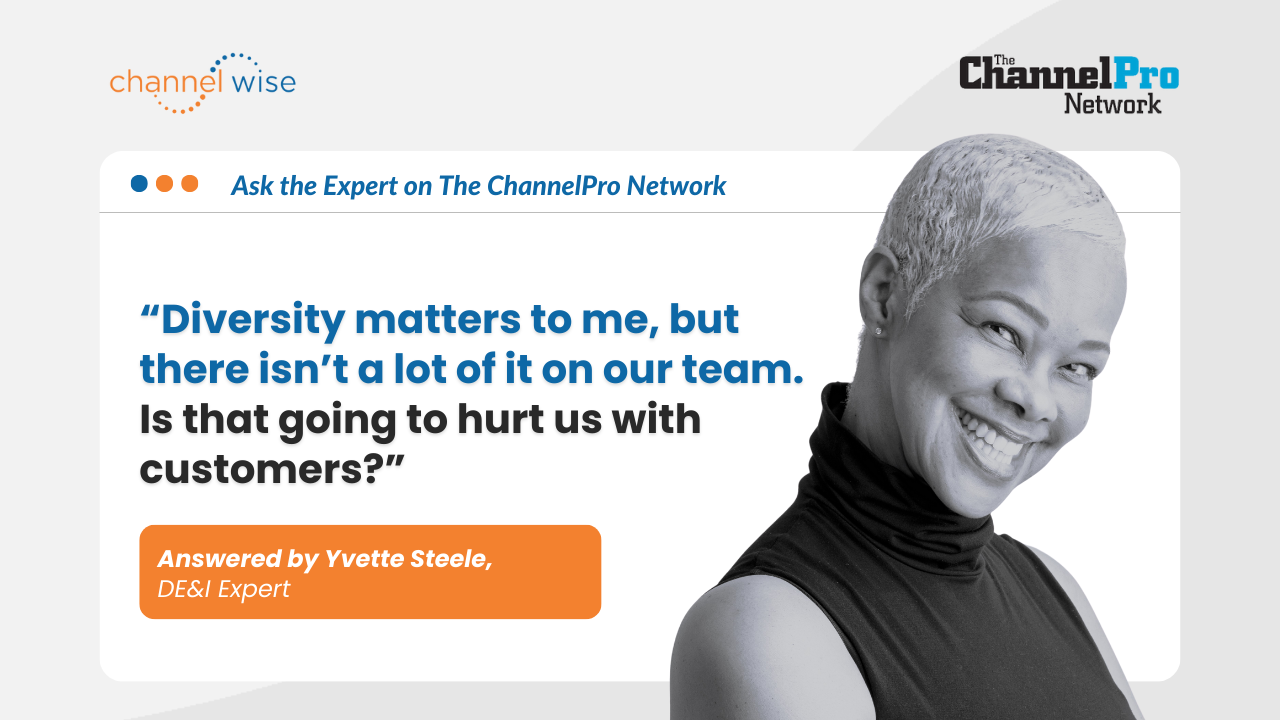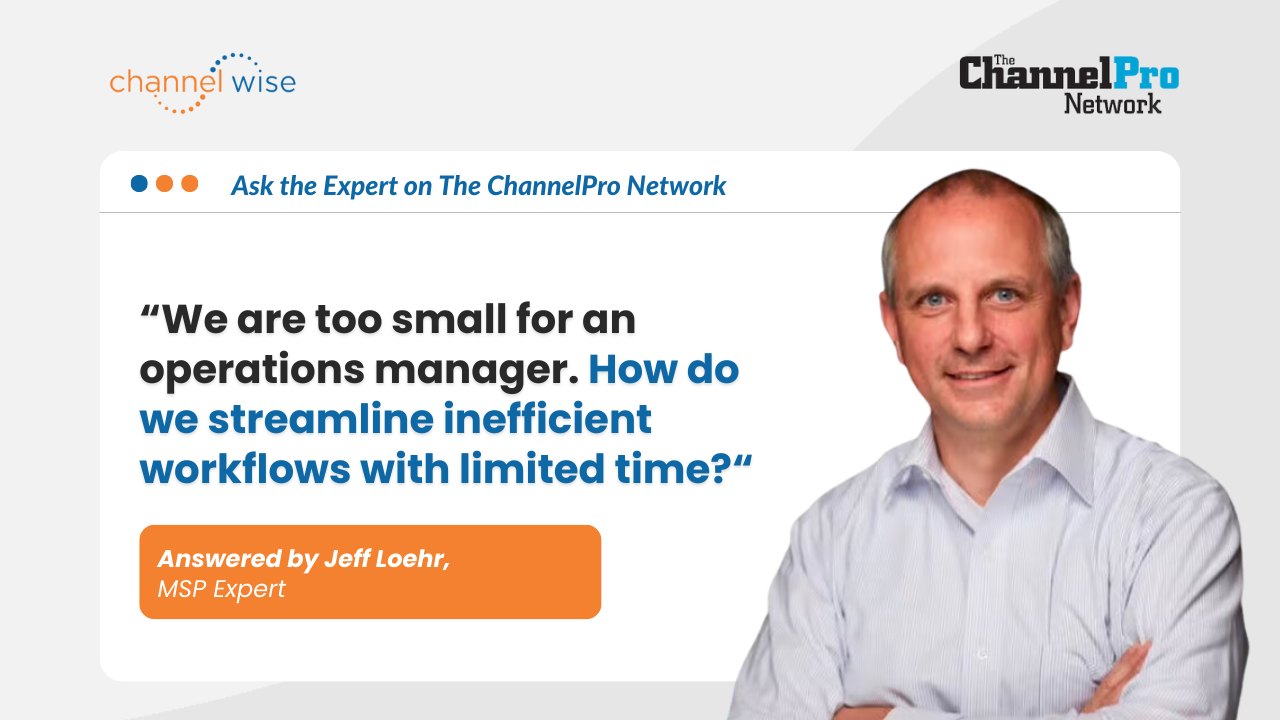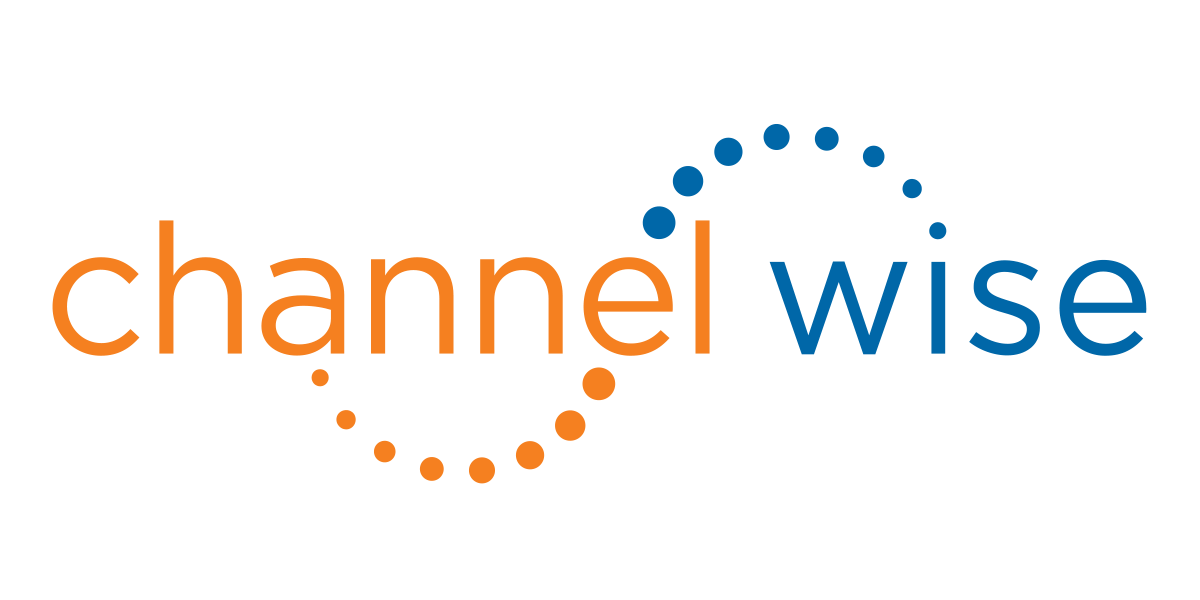Ask the Expert Live

-
How to Expand Internationally Through the Channel Ecosystem
Watch Replay -
Why Your Cybersecurity Sales Are Failing
Watch Replay -
How to Build an Effective MSP Channel Program
Watch Replay -
Leading in a Shifting Landscape
Watch Replay
Get your questions answered
by TOP experts in the Channel
Every Thursdays at 11AM ET
Your Toughest Questions
Answered Only by the Best
Every Thursday,
we invite thought leaders and industry veterans for 30 minute interviews to answer some of the most challenging questions about your business or career.
Whether you're an MSP, Vendor, or any other business in the channel, we've got the experts for you.
If you ever miss an episode, don't worry! We've got you covered with detailed show notes and replays, capturing all the critical insights from our top experts.
Sign-up to automatically get notified.
Join the List,
Stay Updated Every Week
Ask the Expert Landing Page
Thank you for contacting us.
We will get back to you as soon as possible
We will get back to you as soon as possible
Oops, there was an error sending your message.
Please try again later
Please try again later
Missed an Episode?
Check Them Out Here

By The ChannelPro Network in Collaboration with the channelWise Team
•
February 12, 2024
One of the biggest marketing challenges I see with managed services providers is identifying the right marketing channels and tactics. Navigating the maze of marketing tools can be a daunting task for MSPs. Here are some of my favorite tools that won’t have you digging deep into your pockets: Interview Your Ideal Clients Have you ever thought about simply having a chat with your ideal clients? It’s a classic, cost-effective way to understand what your clients really need and want. Engaging them in interviews can unveil their preferences, needs, and challenges straight from the horse’s mouth. And it’s free. Incorporate Tools Like ChatGPT AI has been making waves in the marketing sphere, and one tool that stands out is ChatGPT. This multipurpose tool can assist with content creation, SEO optimization, email marketing support, and more. Start with a free plan, and if it meets your needs, the paid plans kick off at $20 per month. Google Analytics & Search Console For a deeper dive into your website’s performance, Google Analytics is your go-to tool. It’s a treasure trove of data, offering insights into traffic, user behavior, and the effectiveness of your marketing campaigns – all for zero cost. Alongside it, Google Search Console can be your ally in optimizing your site’s visibility on Google, also without costing a dime. Try Ubersuggest SEO is a linchpin for online visibility, and Ubersuggest is a solid, budget-friendly option for keyword research, site audits, and competitive analysis. It has a free version, but its paid plans are competitively priced starting at $29 per month or a one-time payment of $290. Shore Up on LinkedIn LinkedIn, the haven for B2B marketing, is a social media platform you shouldn’t overlook. It’s a formidable space for networking, sharing insights, and flaunting your MSP services to a professional audience. Basic usage is free, but if you fancy more features, premium plans are available at a cost. Email Marketing Despite being a veteran in the digital marketing arena, email marketing still holds its ground as a cost-effective channel. Platforms like Active Campaign, Mailerlite, Mailchimp, ConvertKit, and Aweber are notable mentions. Their pricing starts at $10 to $20 monthly. Incorporating these tools can serve as a catalyst in refining your marketing operations, understanding your audience better, and fostering a stronger connection with them without burning a hole in your pocket.

By The ChannelPro Network in Collaboration with channelWise
•
February 12, 2024
Today’s customers want to see themselves reflected in the companies they support. Research has shown that a lack of diversity within teams is detrimental to business development and customer relationships, especially when your customer base is diverse. The primary reason that diverse teams are critical to the success of client engagement is due to the unique experiences and intersectionality of the varied perspectives each team member brings to the table. This opens the door to more creativity and improved problem solving that your customers expect from you, which leads to greater customer satisfaction. Your ability to connect with customers thrives on your capacity to deliver fresh perspectives and how well you anticipate and respond to their needs. The more your team is representative of the markets they serve, the more valuable their insights become – and you can create better solutions for your client. Lack of Diversity Stifles Progress Consider the backlash experienced by big brands that create racially or culturally insensitive ads or products. Chances are no one with a varied perspective was present in strategy meetings to challenge the status quo. Perhaps you have personally experienced a client interaction where you or a peer unwittingly disregarded the position and authority of the primary decision maker based on their race, age, gender, or other misguided assumptions due to a lack of cultural competence. It happens all the time but it doesn’t have to. Diversity is less about how a person looks or where they come from; it’s more about valuing different points of view and being open to exploring new ways of thinking. It’s about integrating diversity of thought, which comes from the unique backgrounds and experiences of diverse individuals. By contrast, homogeneous teams are composed of individuals with similar backgrounds, perspectives, and experiences, which often subjects them to groupthink, blinds them to new opportunities, and hinders exploration of unconventional approaches. Thus, you’ve inadvertently stifled the very progress you aim to achieve. Create Your DEI Strategy As you plan your next client interaction or strategy meeting, ask yourself these questions: How well do we understand the unique needs, preferences, and challenges of diverse customer segments and/or buyers? Which team members’ perspectives are missing? Why are they not in the room? How can we adjust our thinking to better connect with our clients and their needs? The responses to these questions position you to address the gaps, better relate to your customers and their unique challenges, and help them innovate. A diverse team is better equipped to do just that.

By The ChannelPro Network in Collaboration with channelWise
•
February 12, 2024
I see this problem all the time: You’re overworked, can’t keep up with tickets, the phone is ringing, and there is no time for anything other than fighting to keep your head above water. However, if you don’t change anything, you will never break free. Even hiring an office manager won’t help because if you haven’t taken the steps to create a business machine, they’ll end up increasing your workload rather than reducing it. So, how do you create a machine? Here are some recommendations. Focus Your Operations Start by streamlining workflows through repeatable processes, then document them as you work. The most common source of inefficiency is solving many problems for many kinds of customers. You will be spread very thin and will never catch up if you work with accountants who have issues with Thomson Reuters, QuickBooks, and Liscio; doctors who struggle with Epic; and architects who need to make Papercut and AutoCAD work. The key to mechanization is focus. Get spectacular at solving a few critical problems for very specific markets. Focus cuts work out of your process and reduces work throughout the business. Make Time to Document A lack of time is a problem for many businesses, but you don’t have time to not document. Undocumented processes take two to three times longer to complete – sometimes much more – because you figure it out each time. A lack of documentation is why hiring an office manager won’t help. One of my clients passionately resisted documentation. They were drowning in tickets, unsatisfied customers, and unfinished projects. They also suffered from a lack of sleep. Documenting the first process was hard, but now, they have 5,000 processes documented. Trailing tickets were reduced by 93%, revenue tripled, they hired a team that delivers impressive results, and they take vacations without their phones. Use Automation Tools The third piece is automation. But you cannot automate a process you haven’t defined. That creates a mess and endless work. Once you have something defined, automate it. PSAs and RMMs have self-healing scripts and scripts for common problems that can save oodles of time. Ensure you set proper thresholds so you can detect issues before they escalate. This takes out randomness. Automate ticket assignments and responses, and create canned answers for the top 50 things your techs respond to. Plus, with open APIs, compatible tools, and tools like Zapier, you can automate an almost endless list of routine office tasks: Proposal creation and delivery Follow-up processes QBR (SBR) scheduling Sending birthday cards By incorporating these strategies, even time-strapped small companies can reduce burdensome workloads.

Contact Us
© 2025
All Rights Reserved | wiseHer, Inc. d/b/a channelWise




